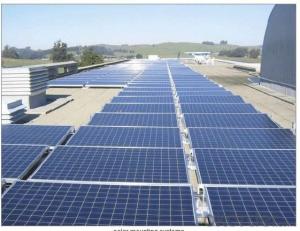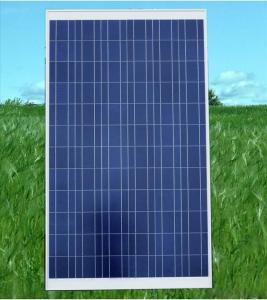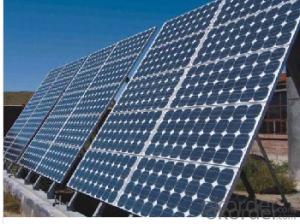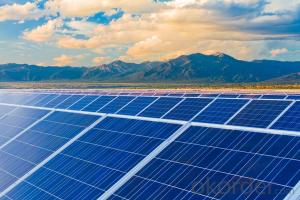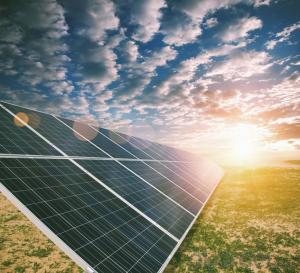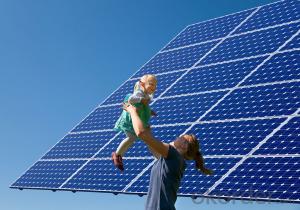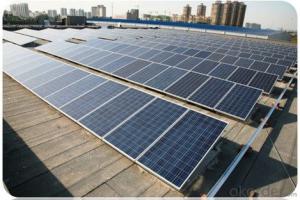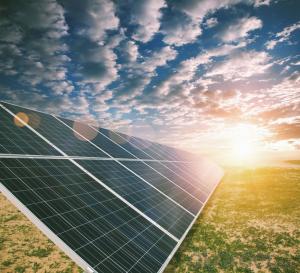Lincoln Financial Field Polycrystalline Silicon 260W Solar Panels
- Loading Port:
- China main port
- Payment Terms:
- TT OR LC
- Min Order Qty:
- 100000 watt
- Supply Capability:
- 10000000 watt/month
OKorder Service Pledge
OKorder Financial Service
You Might Also Like
Specification
About us
CNBM International Corp, established in 2004, is the business entity for trade and logistic of CNBM Group.With the
advantages in Cement, Composite Materials, New Building Materials and Engineering, CNBM mainly concentrate on coal, steel
and construction equipments and give priority to solar and wind energy development.CNBM International is highly recognized
by its business partners and clients all over the world and has established good business relationship with the customers
in over 120 countries and regions all over the world.
FAQ:
Q1: Why buy Materials & Equipment from OKorder.com?
A: All products offered byOKorder.com are carefully selected from China's most reliable manufacturing enterprises. Through its ISO certifications, OKorder.com adheres to the highest standards and a commitment to supply chain safety and customer satisfaction.
Q2: What is a solar PV module?
A: A solar PV module consists of many solar cells that are connected together (typically in series) and packaged in a frame (typically made of aluminum).
Q3: What are the advantages and disadvantages of monocrystalline solar PV modules?
A: Monocrystalline solar PV modules are the most efficient type of solar PV modules, with the exception of CdTe thin film solar PV modules. As a result, monocrystalline solar PV modules are more expensive when compared to almost all other types of solar PV modules.
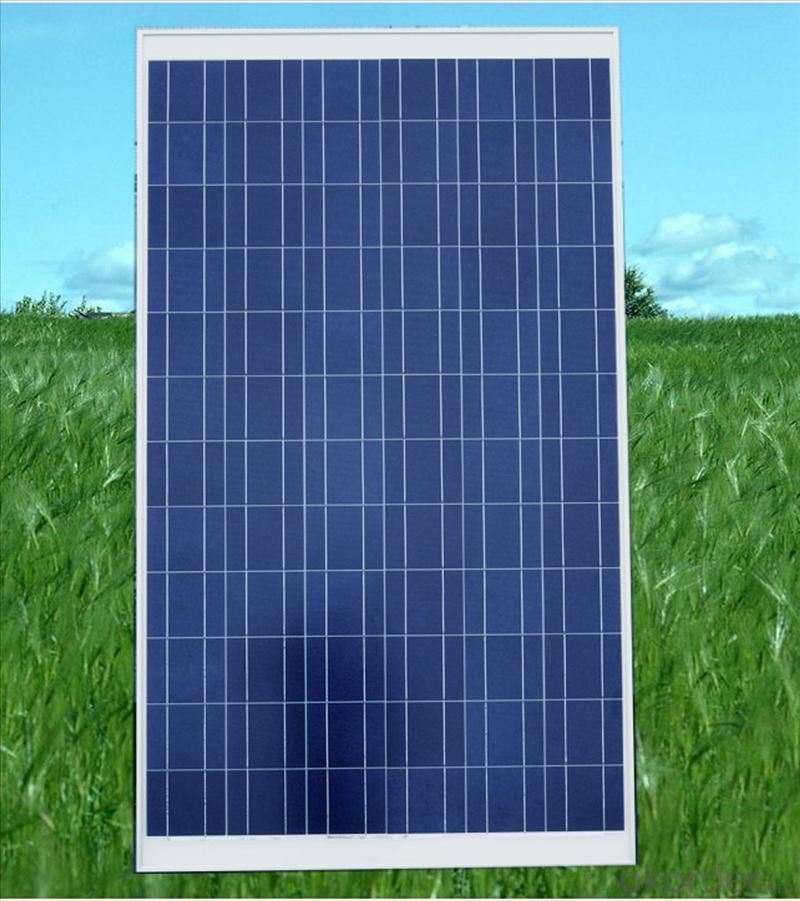
Data sheet
Maximum power | 260W |
Cell type(mm) | Polycrystalline solar cell 156*156 |
Number of cell(pcs) | 60(6*10) |
Manufacture site | China |
Open-circuit voltage(voc) | 37.6V |
Maximum power voltage(vmp) | 30.5V |
Short-circuit current(isc) | 8.95A |
Optimum operating current(imp) | 8.53A |
Power tolerance | 0~+5W |
Module efficiency | 16% |
Dimensions(mm) | 1640*992*40 |
Weight | 19 kg |
Backsheet | Silver |
Frame Colar | White |
Frame | Anodized Aluminum Alloy |
- Q: Can solar panels be installed on a garage or carport?
- Yes, solar panels can be installed on a garage or carport. These structures often provide ample space and a suitable angle for solar panel installation, allowing homeowners to generate clean and renewable energy while utilizing the available space efficiently. Installing solar panels on a garage or carport can also provide additional benefits such as shade for vehicles, reduced utility bills, and the opportunity to contribute to a greener environment.
- Q: I would like to know how do you build a solar panel?
- There are several types of solar panels. If you mean photovoltaic panels for generating electricity, that is a really advanced project that few amateurs are equipped to do. In the long run, it will be a lot cheaper and easier to buy factory made PV panels. You can try building one by sandwiching an array of photovoltaic cells between a sheet of glass or plexiglass and a sheet of aluminum. Remember that this assembly must be able to withstand great heat, and it must be sealed to make absolutely sure it does not leak. So basically, you need to lay out the PV cells and wire them together to get the desired voltage and current, with some arrangement to allow the wires to extend outside without leaking. Then you enclose the panel around all four edges with aluminum channel and seal with silicone sealer. Lay it on thick and test thoroughly with water hoses to eliminate all leaks. As mentioned, it's easier and cheaper to buy them factory made. If you mean a heat collector for a solar house heating system or hot water system, that is just a matter of building a thin, flat aluminum box with a glass lid. For hot air, you just need to circulate the air through the box when the sun is shining. For water, you need to have some arrangement to pass the water through the compartment in thin walled metal tubing. You won't be surprised when I say it's cheaper to buy one factory made. Good luck.
- Q: All I ever heard is how easy it is to get solar panels for a persons home. I live in Arkansas and to do my house it would cost 25000 that I dont have and No state incentives. So where do I go and get these free solar panels? Thanks for the help
- Sorry this is so long. I live in north west arkansas. I have solar on my home. I installed them myself. Did not cost me anywhere near 25 grand. Solar will pay you back if you get incentives or not. I have said this a hundred times but people just don't seem to understand or can't do the math. You are renting from the public utility. You have nothing in the end but a stack of payment stubs. There is no way to get a return on your investment. You paid them money and have nothing. Nothing at all .. Well maybe good service. But still nothing. If you check it out most solar electric systems last 30 years or longer. If your electric bill is 00 dollars a month. do the math. 00 dollars a month for 30 years is $36,000 dollars you would normally pay the public utility. So why not buy your $25,000 system, you just made $0,000 right there on the spot. Now add in 3.5% cost of living per year for each year for the next 30 years on that 35,000 you pay the public utility. Then you have to keep in mind you do not pay taxes on any electric you make yourself. You do not pay fees on your own power. You do not pay the cost of fuel incresses every time the price of oil goes up. In the end you saved $00,000. So it is free even if Arkansas don't give free handouts like other states. I even know people who say they are waiting for some one to make a cheaper solar module. That will not happen because even if they make it for half the cost (like evergreen is doing) it will still be sold at standard market value not production cost. The real problem with solar is it is hard to come up with the upfront cost. But renting solar panels is comming but that is the same as just renting power from the public utility. I wish you luck but it will be a while before Arkansas will make any moves on renewables. They just in 2007 made it law that the public utilities have to let your roll your net metering over to the next month if you over produced.
- Q: Are solar panels safe for the environment?
- Yes, solar panels are safe for the environment. They generate clean and renewable energy by converting sunlight into electricity, resulting in no harmful emissions or pollution. Additionally, solar panels do not deplete natural resources and have a minimal impact on ecosystems when properly installed and maintained.
- Q: Can solar panels be installed on a shopping mall or retail complex?
- Yes, solar panels can be installed on a shopping mall or retail complex. Many shopping malls and retail complexes have large roof spaces that can accommodate solar panels. Installing solar panels on these buildings can help to reduce energy costs, decrease carbon footprint, and demonstrate a commitment to sustainability. Additionally, the solar panels can provide a source of clean and renewable energy to power the operations of the shopping mall or retail complex.
- Q: could any tell me what type off panel is the best tube or flat and how much it should be. I live in N Ireland
- the okorder himin solar
- Q: Can solar panels be used on vehicles?
- Yes, solar panels can be used on vehicles. They can be installed on the roofs or hoods of cars, trucks, and even boats to harness solar energy and charge the vehicle's battery or power various electrical systems. This helps reduce reliance on fossil fuels and make vehicles more sustainable and energy-efficient.
- Q: lately i have been interested in solar power. i own my own home and in Texas it's HOT, so my A/C is always on and that light bill is like $300.00 a month. i was looking at other light companies but then i remembered that there are the so called solar power but i dont knowknow to start or how it would work to power the a/c machine...pls help
- I live near a community in Mexico where hey have no power. It is in the desert and is perfect for solar because they only have 3-4 in. rain a year. It is on the beach so many wealthy have homes there that are on solar systems. I have helped my friends set up and work on many of them. Solar systems WILL NOT normally support air conditioning unless you install a gas powered ammonia or lithium Bromide system. In these systems the refrigeration cycle heat is supplied by the gas instead of a compressor, so the only electrical power is a small circulation pump which will not drain batteries fast. These are a problem in some areas because not many people know how to maintain and repair this type of system. Some of my friends claim they can run a very small one room AC on their solar systems just to at least have a place to sleep that is cool. Others say it is questionable. Please understand these systems are not cheap. Most of them paid $20,000 - $35,000 and even more if you use the ammonia cycle AC. The systems usually have 0-2 panels, a 0-5 KW gas generator, and large bank of large batteries like ones you use in a golf cart or bigger. I also must apologize to all the environmentalists for the inconvenient truth.
- Q: I am doing a school project and we need to find the cost of solar panels for our school. The problem is i don't know what size the system needs to be. Is it 000 watts or 000000 watts?Also can you find the cost of the system?Thanks
- My okorder .
- Q: How do solar panels affect the overall air quality of a building?
- Solar panels have a positive impact on the overall air quality of a building. They generate electricity by harnessing solar energy, which is a clean and renewable source. By using solar panels, buildings can reduce their dependence on fossil fuel-based power sources, such as coal or natural gas, which produce harmful emissions. This reduction in greenhouse gas emissions helps to improve the air quality, making the building more environmentally friendly and sustainable.
Send your message to us
Lincoln Financial Field Polycrystalline Silicon 260W Solar Panels
- Loading Port:
- China main port
- Payment Terms:
- TT OR LC
- Min Order Qty:
- 100000 watt
- Supply Capability:
- 10000000 watt/month
OKorder Service Pledge
OKorder Financial Service
Similar products
Hot products
Hot Searches
